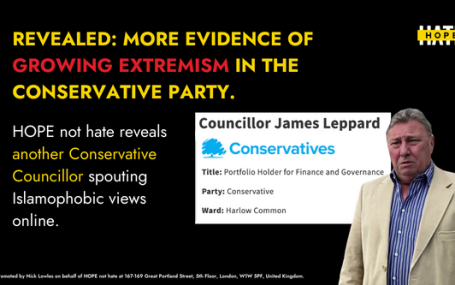HOPE not hate uses cookies to collect information and give you a more personalised experience on our site. You can find more information in our privacy policy. To agree to this, please click accept.
By Cas Mudde
After months of feverish coverage of the Swedish elections, characterised by bad takes and overemphasis on outlier polls, we finally have the results. At first sight, they may appear to confirm that dominant media narrative – an embattled political establishment is defeated by an emboldened, populist radical right. The far-right Sweden Democrats (SD) were the biggest victors, their share of the vote rising from 12.9% to 17.6%, while the centre-left Social Democrats and centre-right Moderates lost the most, their votes falling 2.6% and 3.5% respectively.
Radical-right politicians, and their growing ranks of prominent sympathisers in mainstream politics and punditry, will use the success of the SD to further advance their arguments for immigration reform, drawing upon their own version of the Swedish dystopia that has become so popular in rightwing circles on both sides of the Atlantic. They will declare the Swedish elections a rejection of the liberal policies on refugees enacted by an out-of-touch political elite, ignoring the fact that that same “elite” has actually rowed back on their previous open policy, instead peddling nativism-lite policies and rhetoric for most of the past two years.
A staggering 41% of Swedes voted for a different party in 2018 than in 2014. Both the Social Democrats and the Moderates shed huge chunks (34% and 46% respectively) of their 2014 support The radical-right SD were the primary beneficiary in both cases, taking 11% of the Social Democrats’ 2014 vote and 14% of the Moderates’. The SD also held on to the vast majority of its 2014 voters – a record 86%.
A recent paper (predating the elections) on rising support for the SD argues forcibly that economic anxiety is the cause, though most papers by economists do. More controversially the authors argue that the rise of the SD has (re-)integrated so-called “economic losers” into politics as both candidates and voters, thereby making Swedish politics more inclusive. While this may be true to an extent, it is important to note that the party mainly integrates male economic losers, with polls revealing a massive gender gap in their support. As is typical of populist radical-right parties in western Europe, male votes for the SD outnumbered female ones by nearly two to one.
Even by Swedish standards, however, the 2018 elections were not a political earthquake. The two parties in government (the Social Democrats and the Greens) both lost 2.8% and 2.4% of their votes, respectively. However the “radical” leftwing Vänsterpartiet, which supported the government in crucial votes, had a positive swing of 2.2%, making the total vote loss of the left a mere 3%. In 2014 the right-wing Alliance lost 10% while in government.
In many ways, 2018 is simply the continuation of a process of normalisation in Swedish politics that began in 2010 and became more pronounced in 2014, when the SD’s vote grew by 7.2%, one-and-a-half times as much as last night. Sadly, although Sweden is a decade or two behind the curve of other countries, its mainstream parties make the same mistakes. After years of ignoring the radical right, they let the SD set the political agenda. Consequently, the campaign was dominated by debates on “hard issues” like healthcare, immigration and law and order; the latter two at least partly “owned” by the SD.
Although the SD initially had strategic debates with the Moderates, the Social Democrats eventually decided to engage with them in an attempt to win voters torn between the two parties. Once again the anti-immigrant voters chose the original over the copy, as the losses of the Moderates in particular show. Some Social Democrats will argue that their move to the right stemmed the exodus of white working class voters, but even if that is true, it is a small reward for the big price they paid: conceding the political agenda to the radical right.
So, despite the spike in refugees in 2015 and 2016 and the panicked response of the established parties to the backlash against it, the allegedly unpopular centre-left government had a fairly normal election result, sustaining less than a third of its rightwing predecessor. Moreover, Swedes did not flock to the radical right. The radical left and two centrist parties also made gains, each claiming roughly half of the SD’s vote gain.
The most important lesson of the election is that Sweden is joining other countries in western Europe in having an increasingly fragmented party system that includes a sizeable radical-right party. This fragmentation has been ongoing for over a decade and has structural causes which go beyond the Great Recession or the alleged “refugee crisis”. And it is here to stay.

Cllr James Leppard expressed Islamophobic sentiments and endorsed abuse of Sadiq Khan HOPE not hate can reveal further evidence of the growing problem of extremism…